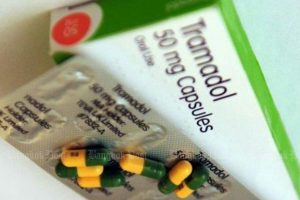Certain medicines can help to reduce severe symptoms of opioid withdrawal. This makes it easier for patients to progress into recovery. Tramadol is one of the medications used for this. Tramadol is an opioid medication that is used to relieve severe to moderate pain particularly after surgical procedures. The drug also has an extended-release variant that can be effective for people with chronic pain.
Opioid drugs are those manufactured from opium or compounds similar to it. Such drugs are very powerful painkillers but they can also have an effect on the user’s behavior and mood occasionally leading to opioid addiction. As a Schedule IV drug, Tramadol has a low potential for dependence and abuse so it is acceptable for medical use.
Tramadol Use for Opioid Withdrawal
 Tramadol is classified as a weak opioid agonist. This means it works by activating the brain’s opioid receptors at a lower intensity than other opioid medications. Currently, there are no indications that the FDA has approved Tramadol for use in medication-assisted opioid addiction treatment. The approved drugs for this treatment include naltrexone, buprenorphine, and methadone.
Tramadol is classified as a weak opioid agonist. This means it works by activating the brain’s opioid receptors at a lower intensity than other opioid medications. Currently, there are no indications that the FDA has approved Tramadol for use in medication-assisted opioid addiction treatment. The approved drugs for this treatment include naltrexone, buprenorphine, and methadone.
There have been small clinical trial studies of Tramadol showing that it can be beneficial in cases where buprenorphine is unavailable. However, it is not typically viewed as an opioid withdrawal treatment. There is limited data implying that Tramadol can be as efficient as methadone and buprenorphine in relieving opioid withdrawal symptoms.
Withdrawal from any addictive drug is usually a painful and uncomfortable process and anything that helps to alleviate withdrawal symptoms increases your chances of quitting. According to standard recovery philosophy, people suffering from addiction are not meant to be given more drugs. However, this is changing with medication-assisted treatment for addiction.
During withdrawal, both the body and mind will be craving the drug and this urge is strong enough to make the user turn back to drugs. This is why alleviating the withdrawal symptoms increases your chances of attaining sobriety.
Tramadol can be useful in helping to do that because it is not as strong as other opioid drugs. It can be taken under medical supervision and will behave just like an opioid, giving your brain some relief. This reduces the intensity of your withdrawal. Due to this effect, Tramadol can be quite beneficial in helping people suffering from opioid addiction and abuse with recovery.
However, even though Tramadol is still less addictive compared to other opioid drugs, it still has the potential to cause dependency in users. People who already have an opiate addiction can also develop an addiction to Tramadol. Tramadol, just like other addiction treatment medications, is more effective in situations where the user is experiencing minor opioid abuse.
Tramadol relieves pain by working in two ways:
- It stimulates the opioid receptors in the brain.
- It prevents neurotransmitters like norepinephrine and serotonin from being absorbed.
So someone who is detoxing may have two kinds of symptoms: those generated by atypical opioid withdrawal syndrome, which is exclusive to Tramadol, or those produced by opiates. The symptoms of atypical opioid withdrawal syndrome include:
- Confusion
- Unexpected sensory experiences
- Panic attacks
- Severe paranoia
Medically-Managed Opioid Detox
 Only someone who has specialized in addiction treatment can advise you on whether to use Tramadol for opioid withdrawal. Tapering gradually from opioids by slowly decreasing the amount you take with time is the safest way to detox from these drugs as well as Tramadol. A healthcare professional is qualified enough to check your general health and establish an effective and suitable tapering schedule.
Only someone who has specialized in addiction treatment can advise you on whether to use Tramadol for opioid withdrawal. Tapering gradually from opioids by slowly decreasing the amount you take with time is the safest way to detox from these drugs as well as Tramadol. A healthcare professional is qualified enough to check your general health and establish an effective and suitable tapering schedule.
Medically-managed detox is a better and more comfortable alternative to solo detoxing at home. This is because a physician can assess your condition and establish a plan to safely handle opioid withdrawal symptoms.
Opioids usually interact negatively with various drugs so a doctor supervising your detox can help to improve your mental relief and physical safety. You can be in a better position to concentrate on your recovery instead of constantly checking for over-the-counter medications and labels for harmful interactions.
For individuals who want a recovery alternative that excludes being “trapped” in a facility, then a
There have been studies on Tramadol use for opioid withdrawal, but there is still more research required to see if it can be used as an approved treatment.
Tramadol Side Effects
- Tramadol has harmful side effects that most people do not know about such as:
- Increased blood pressure
- Irregular or rapid heartbeat
- Chest pain
- Presence of blood in the urine
- Blisters on the skin
 People who use Tramadol typically experience some toxicity and minor respiratory depression but less drowsiness and sweating compared to other drugs. Tramadol also affects psychomotor tasks such as reaction speed, pattern recognition, and coordination.
People who use Tramadol typically experience some toxicity and minor respiratory depression but less drowsiness and sweating compared to other drugs. Tramadol also affects psychomotor tasks such as reaction speed, pattern recognition, and coordination.
Anyone who gets any of these symptoms should immediately contact their physician or healthcare provider for assistance. Pregnant women should also be careful when using Tramadol because extended use of opioid painkillers during pregnancy can result in neonatal abstinence syndrome.
Anyone looking to stop using opioids and get sober but is afraid of the withdrawal process should speak to their physician about using Tramadol. If you want to go to a rehab or detox facility to get sober, look for a place that uses Tramadol during withdrawal and inquire about the procedure. It might not be an ideal option for everyone but you can ask if Tramadol is an ideal option for your detox. Tramadol use for opioid withdrawal is still a recent idea in addiction treatment but it is getting more traction.
Even though Tramadol could be a possible medication used for opioid withdrawal, there are different methods of handling opioid abuse and dependence. This is why it is important to research and consider all these methods first. Speak to a healthcare provider to help you make an informed decision on opioid withdrawal treatment.













